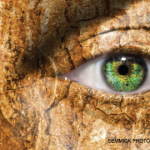 Rheumatologists who are outstanding researchers, educators and/or clinicians, who provide consistently exceptional care to patients, who have achieved a level of distinction in the field and who serve as role models for colleagues and trainees are highlighted in this recurring series.
Rheumatologists who are outstanding researchers, educators and/or clinicians, who provide consistently exceptional care to patients, who have achieved a level of distinction in the field and who serve as role models for colleagues and trainees are highlighted in this recurring series.
Fred Wigley, MD, MACR, is the Martha McCrory Professor of Medicine at the Johns Hopkins University School of Medicine, Baltimore. In 1990, Dr. Wigley established the Johns Hopkins Scleroderma Center to provide excellent care to patients with scleroderma, Raynaud’s phenomenon and related disorders; to perform clinical and basic science research; and to provide educational opportunities. His primary research interest is in scleroderma, Raynaud’s phenomenon and related disorders. He has published more than 180 peer-reviewed manuscripts. He has served as co-editor of Arthritis & Rheumatology, and he has co-edited the books Scleroderma: From Pathogenesis to Comprehensive Management and Raynaud’s Phenomenon: A Guide to Pathogenesis and Treatment. In 2009, Dr. Wigley received the ACR Distinguished Clinician Scholar Award and, in 2011, he was named an ACR Master.
TR: In your opinion, what makes an expert clinician?
Dr. Wigley: When I first started my rheumatology career, I would accept any request. In this phase of my career, I focus on scleroderma, a chronic disease that can shorten one’s life, cause terrible disability and alter the body’s appearance.
I like to start the patient encounter without any preceding information that may influence my judgment. I usually start the visit with some non-medical conversation to relax the visit. The evaluation of the patient starts as soon as the face-to-face encounter begins, and I use my senses to characterize the patient: sick or not sick, nervous or calm, sad or happy, etc. I open the interview with an open question and then listen.
I then try to refine the facts by getting all the fine details of the patient’s symptoms. It is then important to me to review every system not already mentioned to unearth symptoms or signs that need attention or that interact with the principal concern. I then review records and previous medical facts to set the scene for the examination.
I ask the patient to undress and get into a gown to do an exam focused on the main issue, but allowing me to carefully look for the unexpected.

Dr. Wigley
The final phase of the encounter is communication and making sure the patient understands the plan and intervention. I use pen and paper or printed pictures to illustrate my thoughts. This approach is used for new and return patients so each encounter is fresh.



